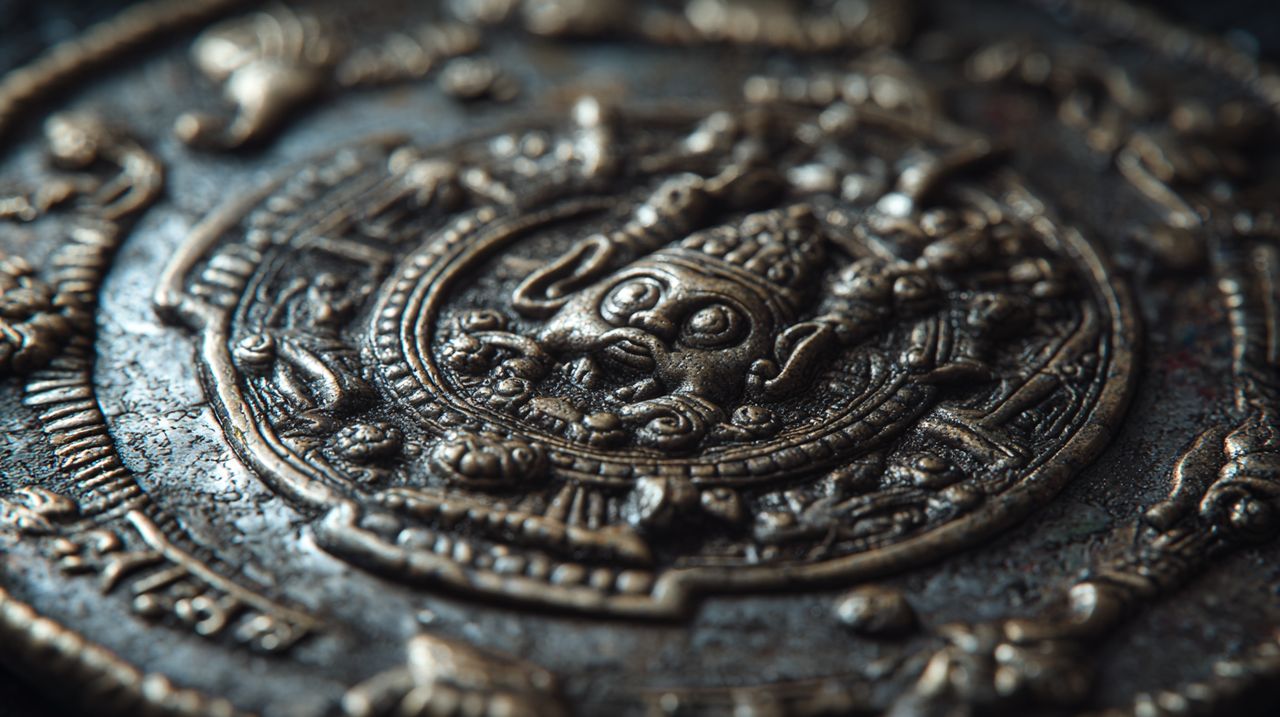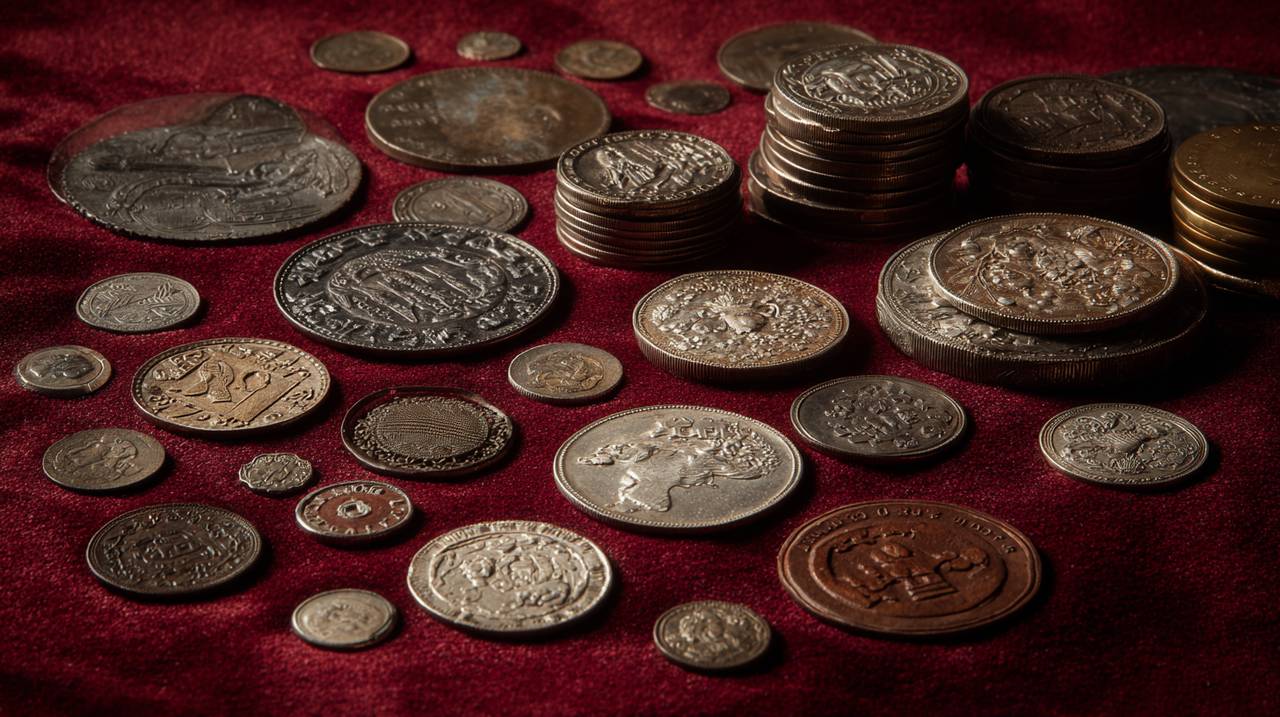Nepal Coins: An Analytical Guide to Their History, Spiritual Meaning, and Collectible Value
When a Nepalese coin is unearthed from history, is it merely a piece of metal, or something more?
When a Nepalese coin is unearthed from the dust of history, we’re presented with a fascinating question: is it merely a piece of metal, or a whisper of time, a vessel of faith, and a promise of fortune? These ancient artifacts offer a tangible connection to Nepal’s past, reflecting the intricate tapestry of its kingdoms, beliefs, and artistic traditions. By examining their evolution and inherent symbolism, we gain a thorough understanding of their significance, both as historical records and as objects imbued with deeper cultural resonance. This analysis will provide a framework for comprehending how these coins transcend their primary function, becoming enduring cultural carriers.
The Echoes of Empires: Nepal Coins Through History
Nepal’s numismatic journey spans millennia, with each era leaving its distinct imprint on the metallic canvases of its currency. Tracing this evolution reveals a dynamic interplay of power, artistry, and external influences, much like reading the chapters of a deeply engaging historical novel.
Ancient Foundations and Malla Splendor
The earliest forms of currency in Nepal include punch-marked coins, dating back to approximately 500 BCE to 200 CE. Typically made of silver and copper, these early pieces were adorned with various symbols, hinting at their societal role.
The Licchavi dynasty, ruling the Kathmandu Valley from around 450 to 750 CE, introduced some of the first known local Nepalese coins. Often crafted from gold, these coins featured inscriptions of kings’ names and religious symbols, such as the stylized figure of Garuda on coins from King Mandeva’s reign.
The Malla period, spanning the 12th to the 18th century, marked a significant flourishing of Nepalese coinage. Malla kings, governing the Kathmandu Valley, issued silver and copper coins renowned for their intricate artistic designs. These often depicted deities like Vishnu, Shiva, and Lakshmi, alongside symbols such as the trident and the endless knot.

Gorkha Consolidation and Dynastic Shifts
The unification of Nepal by Prithvi Narayan Shah in the 18th century under the Gorkha Kingdom ushered in a new chapter for coinage. Early Gorkha coins initially mirrored Mughal and British Indian coinage before developing their own distinct style.
These coins, particularly the silver Mohar, frequently featured images of Hanuman and Gorakhanath, with the sun and moon symbols often appearing above the legend. The Shah dynasty continued to issue coins, and later, during the Rana rule (1846–1951), Nepalese coinage saw further evolution.
In the early 20th century, King Tribhuvan introduced Nepal’s first machine-minted coins, signifying a move towards greater uniformity and a step into the modern age of currency production.
Modern Expressions: Continuity and Adaptation
The Nepalese Rupee (NPR) was officially introduced in 1932, replacing the Nepalese Mohar as the national currency. Modern coins, issued by the Nepal Rastra Bank, continue to integrate national icons and cultural symbols.
For instance, some contemporary 2 Rupee coins feature Mount Everest on the obverse and traditional agricultural scenes with water buffaloes on the reverse. This design thoughtfully connects the currency to Nepal’s natural beauty and agrarian economy, showing how even modern currency carries deep cultural roots.
Beyond Currency: The Spiritual Resonance of Nepal Coins
Nepalese coins are not merely economic instruments; they are miniature repositories of spiritual belief, reflecting a deeply ingrained cultural practice of imbuing objects with sacred meaning. Their designs often convey profound spiritual significance, acting as tiny canvases of faith.
Divine Iconography and Sacred Symbols
Across various historical periods, Nepalese coins consistently featured a rich array of Hindu and Buddhist symbols. Deities such as Vishnu, Shiva, Lakshmi, and Bhavani, along with celestial bodies like the sun and moon, frequently appeared, serving as visual affirmations of the prevailing religious landscape.
The presence of symbols like the trident and the endless knot further underscores a connection to protective and auspicious energies. These iconographies transformed coins into more than just transactional tools; they became portable blessings and miniature altars, carrying spiritual weight in daily life.
Coins as Talismans and Offerings: A Cross-Cultural Perspective
The reverence for Nepalese coins extends to their use as talismans or offerings, reflecting a broader human tendency to assign spiritual agency to tangible items. This practice highlights how objects can transcend their material form to embody deeper cultural and spiritual values. For example, consider the role of animals in symbolism.
The elephant symbolism found in Asian cultures, including Nepal, often associates this majestic animal with wisdom, royal power, strength, and good luck. Elephants are revered and sometimes depicted as deities, such as the Hindu god Ganesh, or are associated with significant spiritual events, like Queen Māyā’s dream foretelling Buddha’s birth. The inclusion of such powerful imagery on coins suggests their role as protective charms, much like how a guardian figure might watch over you.
This practice finds parallels in other spiritual artifacts. Dzi beads, originating from Tibet, are highly sought-after charms believed to offer protection, attract luck, and strengthen spiritual balance. Like coins with sacred imagery, Dzi beads are seen as spiritual relics, often passed down through generations, each carrying its own story and perceived power.
Similarly, the Chinese mythical creature Piyao (or Pixiu) is revered as a symbol of wealth, prosperity, and protection against evil spirits. Its image, often found on jewelry, is believed to attract and retain fortune, much like how certain coins might have been perceived to embody prosperity and safeguard against misfortune.
Energetic Significance: Material, Form, and Intention
Beyond their visual symbolism, the physical properties of coins—their metal, shape, and the intention behind their creation—contribute to their perceived energetic significance. Just as gemstone spiritual meaning posits that different stones carry unique healing energies and spiritual purposes, the metals used in coinage were historically associated with specific properties.
For instance, gold often symbolizes purity and divinity, while silver is linked to the moon and intuition. The act of minting, often involving sacred rituals or the inscription of powerful mantras, could further imbue these metallic disks with a potent energetic charge, making them more than just currency—they become conduits of intention.
The Collector’s Quest: Valuing Nepal Coins Today
For numismatists and cultural enthusiasts, Nepalese coins offer a compelling field of study and collection, driven by factors that extend beyond mere monetary worth. Understanding these elements is key to appreciating their true value.

Rarity, Condition, and Provenance
The value of Nepalese coins in the collector’s market is primarily determined by their rarity, condition, and historical context. Coins from ancient periods, specific limited mintages, or those featuring unique errors or designs can command significant prices.
The state of preservation, ranging from "very good" to "uncirculated," drastically impacts value, with well-preserved examples being highly prized. Furthermore, the provenance, or documented history of ownership, also adds to a coin’s appeal and authenticity, much like the documented history of a piece of fine art.
Market Dynamics and Intrinsic Appeal
The market for Nepalese coins is dynamic, with values varying from a few cents for common modern issues to thousands of dollars for rare historical pieces. Collectors are often drawn to the intrinsic appeal of these coins, which serve as tangible links to a rich cultural heritage.
This allure is comparable to the fascination with other culturally significant items. For example, Buddhist mala beads, used for meditation and mantra recitation, are valued not just for their material but for their spiritual purpose and the stories they carry. The 108 beads on a mala symbolize the worldly desires to overcome, making them tools for spiritual growth.
Similarly, the value of a Piyao charm is enhanced by its association with wealth attraction and protection. Collectors of Nepalese coins seek a similar depth of connection—a piece of history, art, and spirituality encapsulated in metal, offering a unique window into a vibrant culture.
Preserving Legacy: A Cultural Imperative
Beyond financial speculation, collecting Nepalese coins is an act of cultural preservation. Each coin tells a story of its time, its rulers, and the beliefs of its people. Preserving these artifacts ensures that future generations can learn from and appreciate Nepal’s unique heritage.
Ethical collecting practices, including proper handling and storage in acid-free holders, are crucial to maintaining their condition and historical integrity. This careful stewardship ensures that these metallic narratives continue to speak across time.
Embarking on Your Nepal Coin Exploration
The journey into Nepalese numismatics is one of discovery, offering insights into a civilization that skillfully wove its identity into its currency. It’s an exploration that promises rich rewards for the curious mind.
Ethical Engagement and Preservation
For those beginning their exploration, engaging ethically is paramount. This involves researching thoroughly, sourcing coins from reputable dealers, and understanding the historical context of each piece. Think of it as being a responsible custodian of history.
Proper preservation techniques, such as using soft cotton gloves when handling coins and storing them in appropriate albums, are essential to protect these delicate artifacts from damage. These simple steps ensure that the stories etched in metal endure.
Cultivating Personal Connection
Ultimately, collecting Nepalese coins is a personal endeavor. It is about fostering a connection with the history, art, and spirituality these objects embody. Whether drawn to the ancient artistry of the Malla period or the modern symbolism of Mount Everest, each coin offers a unique window into the soul of Nepal.
These are not merely pieces of metal; they are miniature narratives, waiting to be understood and appreciated. The exploration of Nepalese coins is a journey through time and belief, revealing how these metallic disks have served as witnesses to history, conduits of spiritual meaning, and cherished objects of cultural value. Their intricate designs and symbolic representations offer a profound testament to the human desire to imbue the tangible with the transcendent. By delving into their stories, we not only collect artifacts but also connect with the enduring spirit of a remarkable nation.
💡 الأسئلة المتكررة
The earliest forms of currency in Nepal include punch-marked coins, dating back to approximately 500 BCE to 200 CE. These early pieces were typically made of silver and copper and were adorned with various symbols, indicating their societal role.
The Malla period (12th to 18th century) saw a significant flourishing of Nepalese coinage, with Malla kings issuing silver and copper coins renowned for their intricate artistic designs. These often depicted deities like Vishnu, Shiva, and Lakshmi, alongside symbols such as the trident and the endless knot.
Nepalese coins are considered miniature repositories of spiritual belief, acting as tiny canvases of faith. They consistently featured Hindu and Buddhist symbols, deities like Vishnu and Shiva, and celestial bodies, serving as visual affirmations of the religious landscape. They were also sometimes used as portable blessings or talismans.
The value of Nepalese coins for collectors is primarily determined by their rarity, condition (state of preservation), and historical context (provenance). Coins from ancient periods, limited mintages, or those with unique errors or designs can command significant prices.
Modern Nepalese coins, issued by the Nepal Rastra Bank, continue to integrate national icons and cultural symbols. For example, some contemporary coins feature Mount Everest on one side and traditional agricultural scenes with water buffaloes on the other, connecting the currency to Nepal's natural beauty and agrarian economy.







